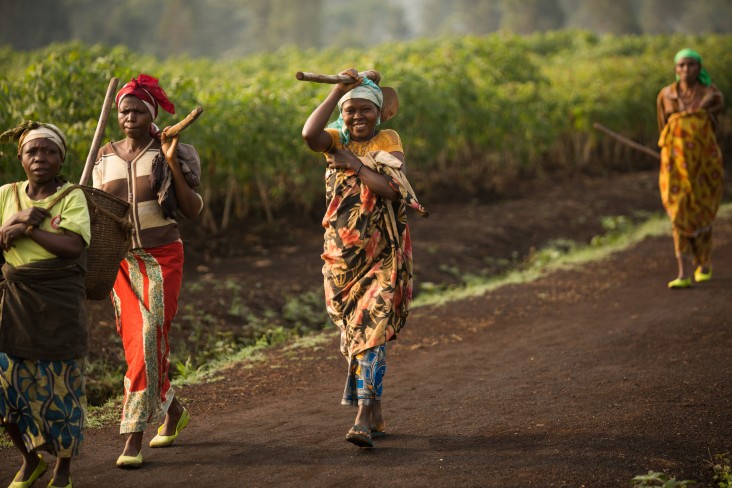- What We Do
- Agriculture and Food Security
- Democracy, Human Rights and Governance
- Economic Growth and Trade
- Education
- Ending Extreme Poverty
- Environment and Global Climate Change
- Gender Equality and Women's Empowerment
- Global Health
- Water and Sanitation
- Working in Crises and Conflict
- U.S. Global Development Lab

Due to the rapid global growth and increasing ubiquity of mobile and digital technologies, it is now possible to unleash a new farming revolution: one driven by data and information sharing. Digital technologies have upended business models and expanded the frontiers of information access in the developing world, by increasing access to more efficient and cheaper payment and savings tools, delivering weather forecasts to actors throughout the agricultural value chain, and providing real-time pricing information to small-scale producers.
The U.S. Global Development Lab (Lab) and the Bureau for Food Security are collaborating in an effort called “Digital Development for Feed the Future” (D2FTF) to demonstrate how leveraging digital tools holistically and according to best practices can improve the cost effectiveness and development results of the U.S. Government’s Feed the Future Initiative.
Digital Development for Feed the Future is focused on four categories of digital tools, based on evidence on their impact: (1) precision agriculture (including sensor technology), (2) digital financial services, (3) data-driven agriculture, and (4) ICT-enabled extension. Digital Development for Feed the Future is scaling the use of these tools through various methods of engagement including: technical assistance to Feed the Future programs, capacity building for Feed the Future teams, and through strengthening the knowledge base on best practices.
Case Studies
D2FTF is working on a series of case studies highlighting how organizations within Feed the Future zones of influence, and across the agriculture sector globally, are using digital tools and technologies to more efficiently and effectively meet their goals, while also documenting improved agricultural outcomes as a result. Each case study in this series looks at different approaches to adoption and how the tools are impacting organizational culture, operations, and programming.
As of September 2017, we have completed two case studies: one on Naatal Mbay, a four year $24 million program in Senegal which works to improve agricultural performance by small producers; and another on One Acre Fund, a social enterprise in Kenya that supplies financing and training to help smallholders grow their way out of hunger and build lasting pathways to prosperity. Click below to read the completed individual case studies:
If you know of an organization that would be a good candidate for a case study, click here to fill out a short survey to be considered.
Resources and Tools for Digital Agriculture
Digital Development for Feed the Future has also worked to compile a comprehensive list of resources for both USAID, implementor, and private sector partners to utlize in their programming and execution of agriculture programs.
Guide to the Use of Digital Financial Services in Agriculture which helps identify specific challenges in value chains, and to subsequently identify corresponding digital financial service (DFS) solutions with the aim of advancing digital financial inclusion for smallholder farmers.
How Digital Tools Impact the Value Chain this document is the result of a meta analysis of 200 documents and reports with evidence demonstrating the value of integrating digital tools into agriculture.







Comment
Make a general inquiry or suggest an improvement.